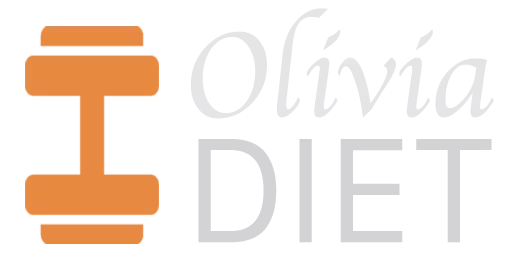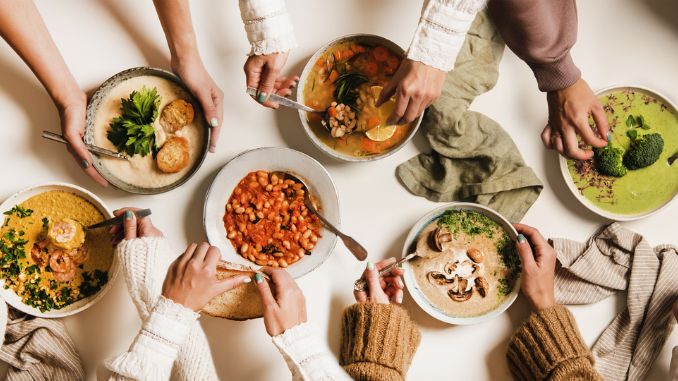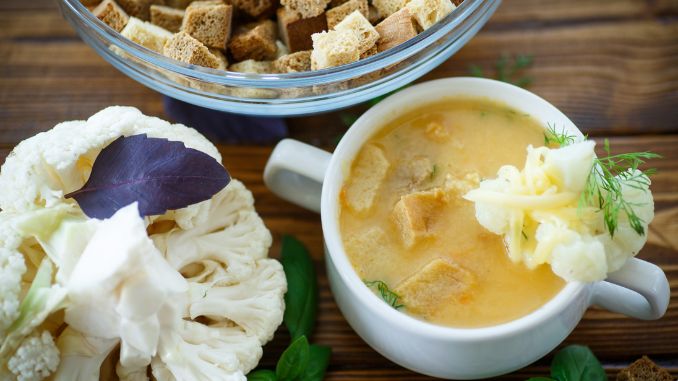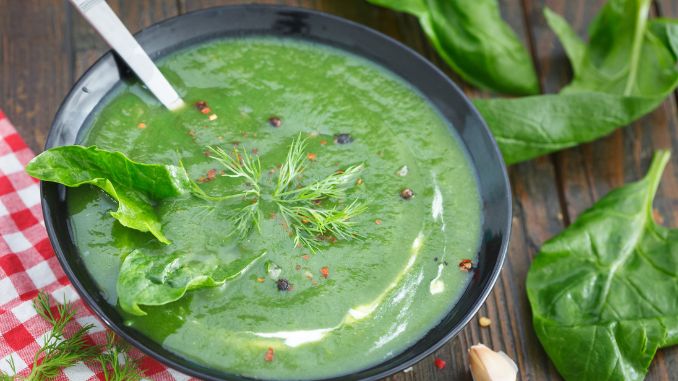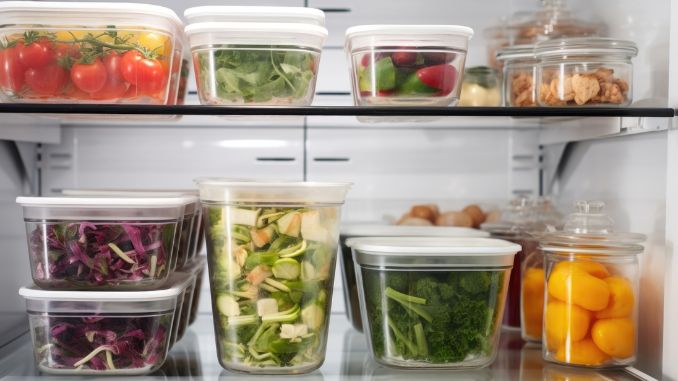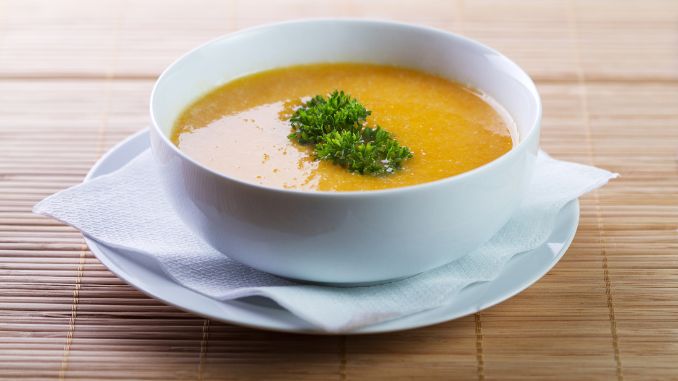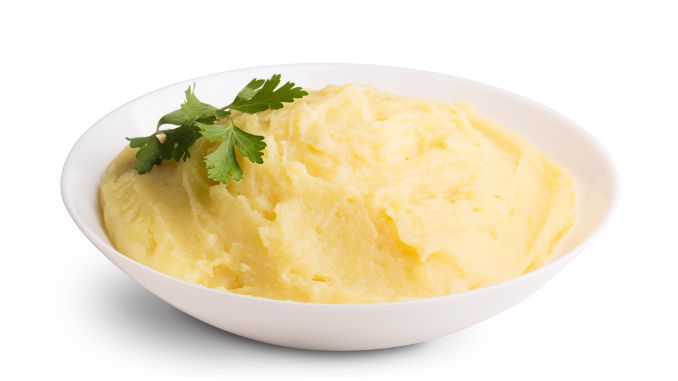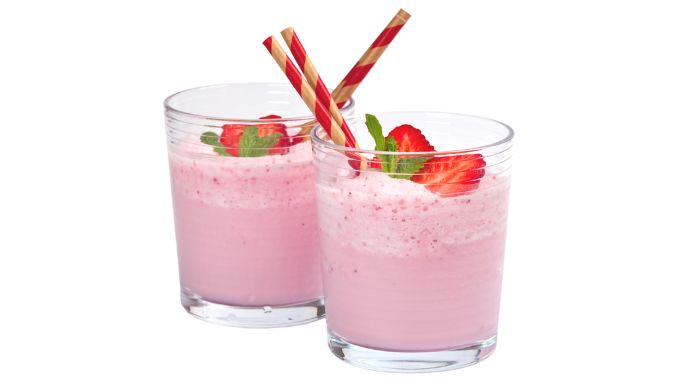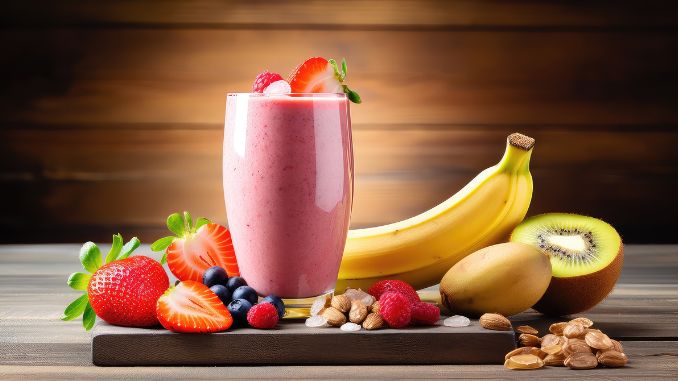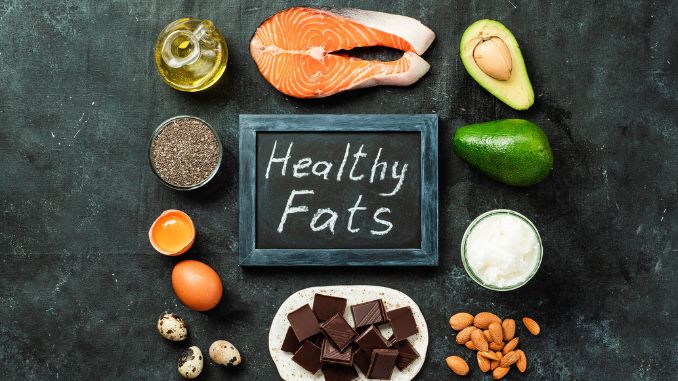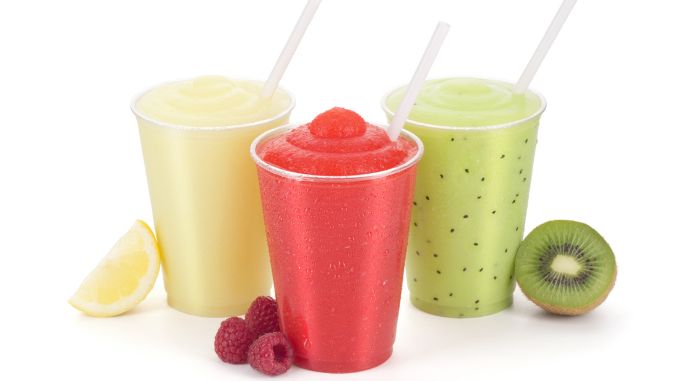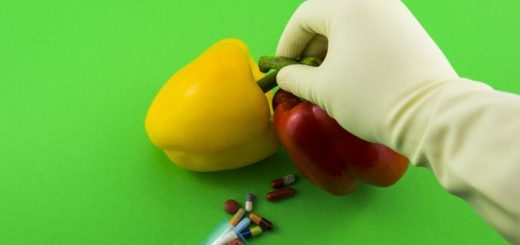Blending Nutrition: A Comprehensive Guide To Pureed Foods For Adults
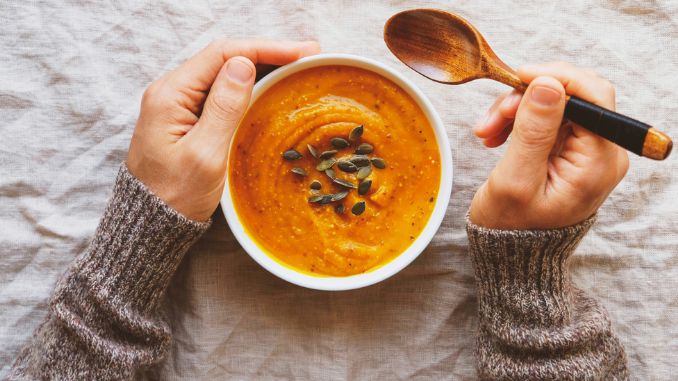
Last updated on May 8th, 2024 at 06:00 pm
Understanding pureed food is about seeing it as a versatile and useful cooking solution. This special way of preparing food, achieved by blending carefully, is meant for people who have trouble swallowing or need a softer diet. Pureed food goes beyond just being a practical choice; it’s a skillful mix of flavors and textures, covering everything from savory to sweet. Pureed foods for adults are essential in providing necessary nutrition for those with swallowing or chewing difficulties.
Its importance lies in making dining inclusive, letting people with specific dietary needs enjoy a variety of tasty and satisfying dishes.
What Is Pureed Food?
Pureed food [¹] refers to food items that have been processed into a smooth, creamy consistency, eliminating any solid textures. The process involves blending or mashing food until it reaches a uniform, lump-free state. Soft-cooked vegetables, such as strained vegetables, are commonly incorporated into pureed diets to ensure proper nutrition.
In the study, pureed foods are really important for people who have trouble swallowing or chewing, like older people or those who have been sick. But, these foods often don't taste good and might not have enough nutrients, which isn't great for health. Some recent studies show that we can make these foods better—tastier and healthier without too much trouble. This can help people enjoy their meals more and get the nutrition they need, making both the people eating the food and those taking care of them happier. Simple changes in how we make and serve these foods can make a big difference.
Puréed Food Diet Vs. Mechanical Soft Food Diet
A. Puréed Diet
A puréed diet, characterized by the blending or processing of all foods into a smooth, liquid-like consistency, is particularly beneficial for individuals facing challenges in chewing or swallowing. The uniform texture of puréed meals, devoid of any solid particles, proves advantageous for those recovering from surgery, grappling with dental issues, or contending with conditions impacting their ability to consume solid foods. The preparation of puréed meals involves the use of blenders or food processors to achieve a smooth texture, encompassing a diverse range of foods, including vegetables, fruits, meats, and grains.
While puréed diets provide necessary nutrients, they may lack some of the textural and sensory experiences associated with regular solid foods. Despite this, efforts are made to uphold a balanced diet by incorporating a variety of puréed foods.
B. Mechanical Soft Diet
The mechanical soft diet offers various advantages over puréed alternatives. It allows for a more diverse texture than a puréed diet, as foods are typically softened or cut into smaller, easy-to-chew pieces, representing a step up in texture.
Unlike puréed foods, mechanical soft meals retain some of the natural textures of the original foods. This makes the diet suitable for individuals who can manage semi-solid textures but still require foods that are easy to chew.
In terms of food preparation, the mechanical soft diet includes mashed vegetables, tender meats, and foods cooked to a softer consistency. Cutting or chopping foods into smaller pieces is a common practice within this dietary approach.
Nutritional considerations are crucial in the mechanical soft diet, as it balances the need for easier chewing and the desire for more texture. This diet permits for a wider variety of foods compared to a puréed diet, providing a compromise that addresses both nutritional intake and ease of consumption.
Choosing Between The Two
1. Individual Needs
The choice between a puréed diet and a mechanical soft diet depends on an individual's specific needs, abilities, and health conditions.
2. Dental Health
Mechanical soft diets may be more suitable for those with some chewing ability or dental concerns, while puréed diets are often recommended for individuals with severe chewing or swallowing difficulties.
3. Transition
Some individuals may start with a puréed diet and gradually transition to a mechanical soft diet as their chewing abilities improve.
Ultimately, the decision between a puréed diet and a mechanical soft diet should be made in consultation with a healthcare professional or a registered dietitian to ensure it aligns with the individual's nutritional requirements and overall health goals.
Mouthwatering Wellness: How Pureed Foods Elevate Adult Health And Happiness
-
Swallowing Ease – The pureed food eliminates lumps and textures, aiding individuals with swallowing difficulties.
-
Nutrient Retention – It maintains essential vitamins and minerals, ensuring a nutritionally rich diet for overall health.
-
Inclusivity – This diet facilitates shared meals, allowing individuals with dietary needs to enjoy diverse dishes together.
-
Variety – Offering a range of flavors and textures, it prevents monotony in restricted eating plans.
-
Adaptability – Aligning with broader health strategies, the pureed food makes it easier to adhere to nutritional guidelines.
-
Enhanced Dining Experience – Beyond functionality, it contributes to a satisfying overall culinary experience for adults with specific dietary requirements.
Unlocking The Health Benefits Of Blended Nutrients
This editorial from the Journal of Nutrition in Gerontology and Geriatrics highlights the role of pureed food in managing nutritional intake for patients with oral-pharyngeal dysphagia, chewing difficulties, or other challenges affecting food manipulation before swallowing. It also discusses technological advances to improve the nutritional and sensory quality of pureed foods.
The nutritional value of pureed food is significant. It provides various benefits for individuals with specific dietary needs.
Here’s an overview:
1. Essential Nutrients – Pureed foods retain essential vitamins and minerals, ensuring that individuals receive the necessary nutrients despite the modified texture.
2. Digestibility – The blending process makes nutrients more easily digestible, promoting better absorption in the digestive system.
3. Caloric Density – Pureed foods can be designed to maintain a balanced caloric density, supporting energy needs for various health conditions.
4. Protein Intake – Pureed meats and legumes contribute to protein intake, crucial for muscle health and overall well-being.
5. Fiber Content – While the fiber texture is altered, incorporating a variety of ingredients can still provide some dietary fiber, supporting digestive health.
6. Hydration – Soups and fruit purees contribute to hydration, especially important for individuals who may struggle with fluid intake.
7. Versatility – The adaptability of pureed foods allows for a diverse range of ingredients, promoting a well-rounded and flavorful diet. The nutritional value of pureed foods highlights their role in maintaining health, addressing specific dietary requirements, and contributing to overall well-being.
Elevate Your Culinary Experience With Effortless Pureed Creations
Making pureed food is easy and quick, thanks to simple steps that anyone can follow. All you need is a blender or food processor to turn regular ingredients into smooth and tasty textures. The process doesn’t involve a lot of cooking, so the natural flavors and nutrients of the ingredients stay intact. Whether you’re making colorful vegetable purees or delicious protein blends, the beauty is in how easy and convenient it is.
This straightforward method is not just helpful for people who have trouble swallowing but also makes life simpler for caregivers and busy families. Basically, the simplicity of making pureed food means it’s accessible to everyone, allowing you to enjoy healthy and personalized meals without a fuss.
Kitchen Items To Help Prepare Foods
-
Blender Or Processor – Essential for creating a smooth and consistent puree texture.
-
Steamer Basket Or Pot – Used for steaming vegetables or other ingredients before blending. Ensure the blender is capable of handling a variety of textures and can provide a smooth puree consistently.
-
Fine Mesh Strainer – Helpful for removing any remaining lumps or fibers from the puree.
-
Rubber Spatula – A rubber spatula helps reach every nook and cranny of your blender or food processor, ensuring smooth mixing.
-
Quality Knives – Sharp knives for cutting and preparing ingredients before cooking or blending.
-
Cookware (Pots, Pans) – Basic cookware for boiling, steaming, or sauteing ingredients.
-
Measuring Cups And Spoons – Precise measurements are crucial for maintaining consistency and nutritional accuracy
-
Cutting Board – A sturdy, clean surface for chopping and preparing ingredients.
-
Storage Containers – Containers with tight-fitting lids for storing batches of puréed food in the refrigerator or freezer.
-
Sieve Or cheesecloth – Useful for achieving an extra-smooth texture by straining out finer particles.
-
Cooking Utensils – Utensils for stirring, mixing, and serving puréed dishes.
-
Food Scale – Especially useful for accurately measuring ingredients, which is crucial for dietary precision.
Recipes For Wholesome Pureed Meals For Adults
1. Creamy Pumpkin Soup
- Ingredients: Pumpkin, whole milk, vegetable broth, cream sauce, brown sugar.
- Instructions: Cook the pumpkin until soft, and blend with whole milk, vegetable broth, and cream sauce. Stir in some brown sugar for sweetness.
2. Rice And Chicken Purée
- Ingredients: Cooked rice, puréed chicken noodle soup, skim milk.
- Instructions: Combine cooked rice with puréed chicken noodle soup, adding skim milk for desired consistency.
3. Mashed Potato Delight
- Ingredients: Smooth mashed potatoes, mozzarella cheese, warm milk, plain Greek yogurt.
- Instructions: Mix smooth mashed potatoes with mozzarella cheese, warm milk, and a dollop of plain Greek yogurt for creaminess.
4. Fruit Smoothie Bowl
- Ingredients: Frozen fruit, mashed banana, nutritional pudding, whole milk.
- Instructions: Blend frozen fruit and mashed banana, top with a dollop of nutritional pudding, and drizzle with whole milk.
5. Cottage Cheese Parfait
- Ingredients: Cottage cheese, canned fruits, brown sugar.
- Instructions: Layer cottage cheese with canned fruits and sprinkle brown sugar for added sweetness.
6. Tomato Juice Gazpacho
- Ingredients: Tomato juice, puréed vegetables, vegetable juices.
- Instructions: Mix tomato juice with puréed vegetables, adding additional vegetable juices as needed for desired consistency.
7. Creamy Breakfast Cereal
- Ingredients: Cooked cereals, whole milk, mashed banana.
- Instructions: Combine cooked cereals with whole milk, and top with mashed banana for added flavor.
8. Frozen Yogurt Smoothie
- Ingredients: Frozen yogurt, frozen fruit, plain Greek yogurt.
- Instructions: Blend frozen yogurt with frozen fruit and for a refreshing treat, top a scoop of plain Greek yogurt.
9. Lemon-Infused Sweet Potato and Rice Soup
- Ingredients: Lemon juice, Chicken broth, Sweet potato, and rice soup
- Instructions: Combine chicken broth, rice soup, diced sweet potatoes, and lemon juice in a pot, simmer until sweet potatoes are tender, then purée until smooth and season to taste. Serve hot, optionally garnished with fresh herbs.
These recipes are designed to provide wholesome, nutritious options for individuals on a puréed diet. Adjust textures and ingredients based on personal preferences and dietary needs. Talk to a medical professional or dietitian for personalized advice, especially after oral or dental surgery.
Tips And Tricks For Embracing Pureed Foods For A Healthier Lifestyle
-
Diverse Ingredients – Use a variety of fruits, vegetables, proteins, and grain to create a well-rounded pureed diet.
-
Flavorful Spices – Add flavor to puréed meals with herbs, spices, and seasonings. This enhances the taste without compromising the texture.
-
Texture Adjustments – Experiment with thickness to meet personal preferences, adding liquids like broth, milk, or olive oil as needed.
-
Protein Boost – Ensure an adequate intake of protein by incorporating puréed meats, legumes, or tofu into your meals. Protein is crucial for maintaining muscle mass.
-
Colorful Presentation – Use a variety of colorful vegetables and fruits to make your puréed dishes visually appealing. This can stimulate your appetite and make meals more enjoyable.
-
Batch Cooking – Prepare and freeze batches of pureed meals for convenient, ready-to-eat options.
-
Adapt Regular Recipes – Modify favorite recipes into pureed versions, ensuring a sense of familiarity and enjoyment.
-
Mindful Seasoning – Be cautious with salt and use alternative seasonings to maintain flavor without excess sodium.
-
Temperature Play – Enjoy both warm and cold puréed dishes to cater to different preferences. Warm soups or cold fruit purées can add diversity to your diet.
-
Hydration – Stay well-hydrated by incorporating liquids like soups, juices, and smoothies into your diet. Hydration is pivotal for your overall health and can aid in swallowing puréed foods.
-
Balanced Nutrients – Pay attention to nutritional balance by incorporating a mix of vitamins, minerals, and essential nutrients.
-
Consult Professionals – Seek guidance from healthcare professionals or dietitians to ensure dietary requirements are met when incorporating pureed food into a diet.
Tips For Increasing Caloric Intake In Your Diet
Calories are crucial in a pureed or mechanical diet, just as in any other diet. They provide the energy needed for daily activities and bodily functions. For individuals on a pureed or mechanical diet, it's important to ensure that they are getting enough calories to meet their energy needs, especially since these diets are often used for individuals who may have difficulty eating and are at risk of malnutrition.
1. Healthy Fats – Incorporate sources of healthy fats such as avocados, nuts, seeds, and olive oil into your meals. These not only add calories but also provide essential nutrients.
2. Nutrient-Dense Snacks – Choose snacks that are both calorie-dense and nutrient-rich. Examples include trail mix, Greek yogurt with honey, and energy bars.
3. Protein Boost – Opt for protein-rich foods like lean meats, eggs, dairy, and legumes to support muscle health. Consider protein supplements if needed.
4. Fortify Meals – Enhance the nutritional content of your meals by fortifying them with ingredients like cheese, whole milk, and nutritional powders without compromising texture.
5. Smoothies and Shakes – Prepare calorie-packed smoothies using ingredients like bananas, nut butter, yogurt, and protein powder. This is an easy way to increase calorie intake.
6. Regular Meals And Snacks – Eat smaller portions more often throughout the day to avoid feeling too full while ensuring a steady intake of calories.
7. Dessert Options – Include indulgent but nutritious desserts like frozen yogurt, pudding, or fruit compotes to satisfy your sweet cravings and boost calorie intake.
Conclusion
Embracing pureed food as a dietary solution offers practicality for individuals with specific needs and a culinary journey filled with flavor and nutritional richness.
The art of pureeing extends beyond mere texture modification; it becomes a gateway to a world of diverse and satisfying meals. By incorporating wholesome ingredients, experimenting with spices, and adapting traditional recipes, one can create a palette of pureed delights that cater to both nutritional requirements and taste preferences.
The tools mentioned earlier serve as allies in this culinary adventure, ensuring efficiency and precision. Pureed food isn't just for those who need it medically. It's a surprisingly creative and adaptable way to enjoy delicious meals, no matter your dietary restrictions. Additionally, sipping on a nutritious smoothie has become a delightful way for adults to seamlessly incorporate a variety of pureed foods into their daily routines.
Frequently Asked Questions
Rick Kaselj MS, is a leading kinesiologist and injury specialist as well as co-creator of the best-selling Unlock Your Hip Flexors program. Rick creates exercise programs that help people heal injuries and eliminate pain, so they can go back to living a full, active, healthy life.
